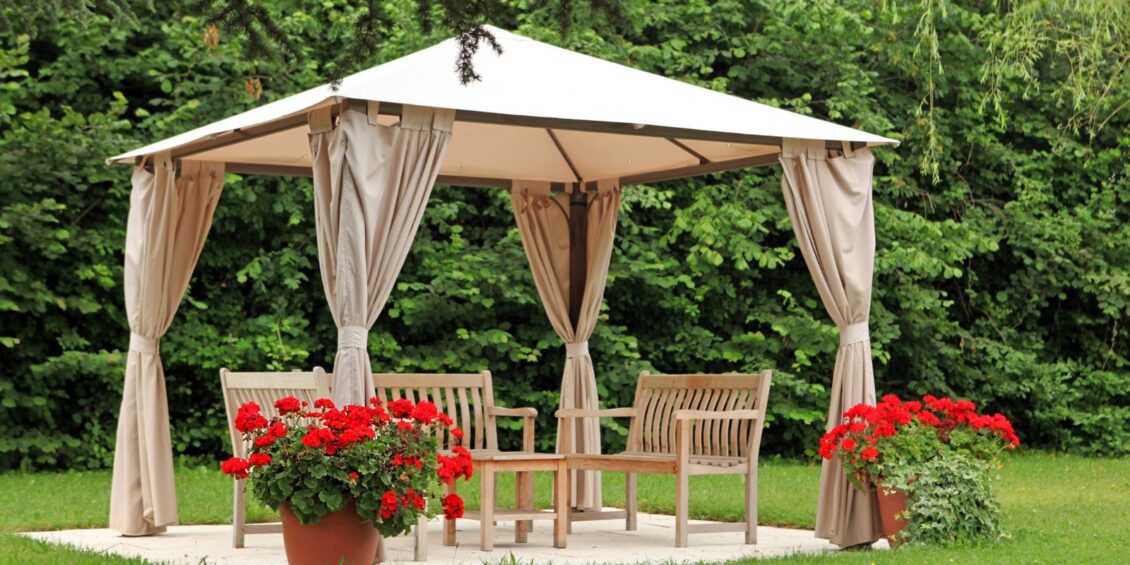We’ve all been there — the joy of setting up a gazebo, only to find it doesn’t cast the shade we expected. Whether you’re organising a garden party, camping, or hosting a stall, a gazebo is your first line of defence against the elements. Proper placement ensures maximum shade, making the setting more comfortable and enjoyable. Let’s explore the techniques to optimise shade for your gazebo.
Understanding the Sun’s Path
Before you can position your gazebo for the most shade, it’s essential to understand the sun’s path throughout the day. The sun rises in the east, reaches its zenith at midday, and sets in the west. Therefore, the direction your gazebo faces at different times of the day will determine the amount of shade it offers.
Morning Events:
If you’re setting up for a morning event, angle your gazebo to shield yourself from the eastern sun. Ensure that the longer side, if your gazebo isn’t square, is facing eastward.
Afternoon Events:
For afternoon gatherings, the gazebo should face west to block the setting sun. Again, make use of the gazebo’s longer side for optimal shade.
All-day Events:
For all-day events, it might be more challenging. Consider additional shading methods such as hanging fabric on the side facing the sun or investing in adjustable sidewalls.
Maximising Shade With Natural Elements
Trees and Buildings:
Use existing structures or trees to your advantage. If your garden has tall trees or if there’s a building nearby, position your gazebo in a way that it benefits from their shade during peak sun hours.
Hedges and Fencing:
While not as tall as trees or buildings, hedges and fencing can still offer a reprieve from the low-angled sun during early mornings and late afternoons. Use these shorter structures to protect the sides of your gazebo.
Consider the Ground Surface
Reflective surfaces like concrete or light-coloured tiles can reflect sunlight, reducing the efficiency of your gazebo’s shade. If possible, place your gazebo over grass, earth, or a darker surface to minimise reflected sunlight. If you’re using it on a patio or other reflective surface, consider laying down a rug or mat to reduce the bounce-back of sunlight.
Advanced Set-Up Techniques
Tilting:
Some gazebos, like those from TFH Gazebos, offer adjustable legs. This feature can be handy for tilting the gazebo slightly, ensuring that one side is higher and thus blocks the sun more effectively during certain times of the day.
Using Sidewalls:
Adding sidewalls or panels can enhance the shading capability of your gazebo. You can adjust or move these panels based on the sun’s direction. This addition also helps in providing privacy and protection from wind.
Layering Fabric:
For a stylish touch that also offers added shade, layering thin fabric or netting over the top of your gazebo can be an effective solution. This can diffuse the sunlight, ensuring softer, more consistent shade underneath.
Aesthetics and Functionality
While the primary focus is on maximising shade, don’t forget the aesthetics. Your gazebo should not only function well but also look good in its setting. Consider matching the gazebo’s style and colour with surrounding elements, be it garden furniture, plants, or other structures.
Moreover, ensure that there’s enough space around the gazebo for ventilation and movement. Overcrowding can lead to reduced airflow, making the shaded area underneath less comfortable.
In Conclusion
Maximising shade for your gazebo requires a blend of understanding the sun’s path, utilising natural elements, and incorporating advanced set-up techniques. With these strategies in mind, you can ensure that your gazebo offers optimal shade and comfort, whether it’s for a morning brunch, an afternoon garden party, or an all-day event. Your guests will thank you, and you’ll enjoy the fruits of your well-shaded labour.









Leave a Reply
View Comments